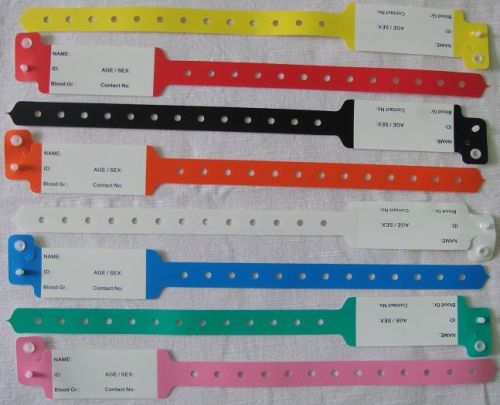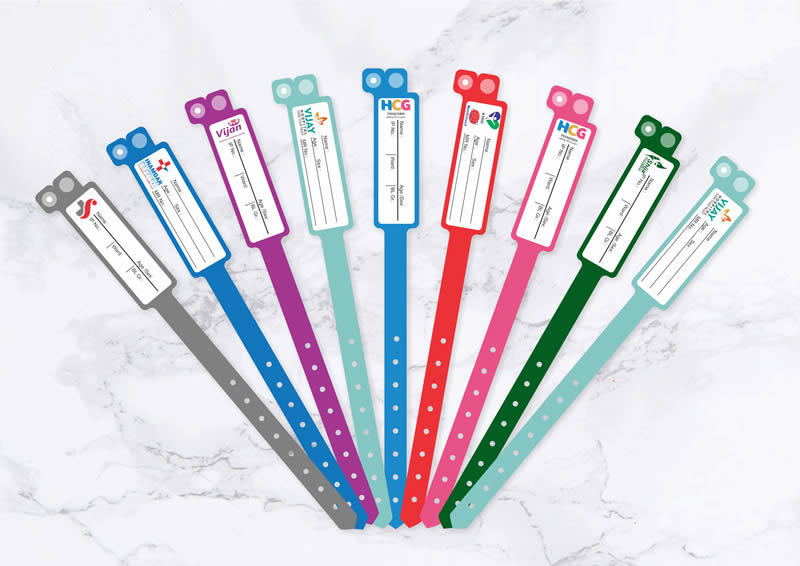How a Patient Identification Band Improves Patient Care and Reduces Hazards
How a Patient Identification Band Improves Patient Care and Reduces Hazards
Blog Article
Discovering the Different Sorts Of Patient Identification Band Utilized in Medical Facilities
In the detailed world of healthcare, the crucial duty of Patient Identification bands often goes undetected. These bands, varying from simple paper wristbands to innovative RFID bands, develop the backbone of Patient safety methods, making sure precision in Patient Identification. Yet, the vast variety of these bands, each with its special benefits and restrictions, is typically overlooked. As we browse through this subject, one might get insight into the refined complexities and essential significance of such bands in clinical facilities.
Comprehending the Relevance of Patient Identification Bands
While they might appear like mere accessories, Patient Identification bands play an essential function in medical facilities. These bands serve as a crucial tool for validating Patient identity, avoiding medical errors related to misidentification. Patient Identification bands likewise aid in streamlining management jobs, guaranteeing accurate record-keeping and payment.
Typical Paper Wristbands: Their Use and Limitations
Conventional paper wristbands have been a staple in Patient Identification throughout different medical centers. While their usage is widespread, they nurture specific limitations that might affect their effectiveness in Patient management. This area will concentrate on the range of their application and the inherent downsides connected with their usage.
Paper Wristbands: Usage Scope
In the world of Patient Identification, paper wristbands have long held a vital function. These bands are typically utilized in outpatient settings, where the Patient's keep is momentary. The wristbands contain necessary info such as the Patient's name, date of birth, and an one-of-a-kind Identification number. This basic, yet effective system, enables physician to quickly and precisely recognize clients, making certain the appropriate therapy is administered. Paper wristbands are likewise made use of in emergency situation circumstances, where quick Identification is vital. Their usage reaches occasions like blood contribution drives and mass vaccination programs, additionally stressing their flexibility. In spite of innovations in technology, the simple paper wristband continues to be a dependable and economical option for Patient Identification in numerous healthcare scenarios.
Limitations of Paper Wristbands
In spite of their extensive usage, paper wristbands are not without their drawbacks. Their physical sturdiness is among the considerable restrictions. Exposure to water, sweat, or rough handling can render them unreadable or perhaps create them to degenerate. Additionally, paper wristbands frequently do not have the technological capabilities of more modern choices, such as barcoding or RFID chips, restricting their performance to simply displaying written details. The lack of ability to update or modify the data on the wristband is an additional drawback. Additionally, if the information is transcribed, readability can be jeopardized, leading to possible misidentification. Paper wristbands can create discomfort or skin irritation to some individuals, especially when put on for prolonged durations.
Barcoded Wristbands: Developments in Patient Identification
While Patient Identification has long been a critical element of medical care, the arrival of barcoded wristbands symbolizes a considerable jump onward. These bands utilize the simplicity of barcoding technology, allowing for Patient information to be rapidly scanned and accessed. They enhance the rate and precision of Patient Identification, lowering the danger of medical mistakes connected to misidentification.
Radio Regularity Identification (RFID) Bands: a Step Towards Futuristic Healthcare
The advancement of Patient Identification bands has actually produced the emergence of Superhigh frequency Identification (RFID) Bands (patient identification band). These innovative tools present key advantages for healthcare facilities, offering an extra effective and technologically advanced means of Patient Identification. The application of RFID in medical care is a significant step in the direction of a much more advanced approach to Patient monitoring and security
Recognizing RFID Bands

RFID Bands: Key Benefits
Accepting a future where innovation and medical care combine, superhigh frequency Identification bands supply several key benefits. Largely, these bands enhance Patient safety by providing accurate, instantaneous Identification, therefore lowering clinical mistakes. RFID bands can store a vast quantity of Patient information, including case history and allergic reactions, enabling customized care. They likewise simplify management jobs, as the automated data access changes hands-on processes, boosting performance and lowering paperwork. Moreover, RFID bands provide real-time tracking of individuals, vital in risky atmospheres such as surgical treatment or extensive care. These bands are sturdy and resistant to environmental aspects, making certain constant performance. Overall, RFID bands represent a significant advancement in Patient Identification technology, profiting both people and health care companies.
Implementing RFID in Healthcare
As we tip into a highly innovative era, the application of RFID bands in healthcare comes here are the findings to be significantly important. These bands give a seamless method to track and recognize people, ensuring their safety and security and improving effectiveness in therapy procedures. RFID bands supply various benefits over standard Identification techniques. They can store a large quantity of information, including the Patient's medical background and therapy plans, which can be conveniently accessed by health care providers. This information assists doctors make informed choices relating to the Patient's therapy strategy. Furthermore, RFID bands lower medical errors by supplying precise Patient Identification, which is important in This Site protecting against misdiagnosis or wrong medication management. Thus, the application of RFID bands is a significant action towards improving Patient safety and security and health care shipment.

Color-Coded Wristbands: Assisting in Quick and Accurate Medical Diagnosis
In the dynamic environment of a medical center, color-coded wristbands have actually emerged as crucial devices for swift and accurate Identification of a person's medical condition. These wristbands, put on by patients, carry certain shades that correspond to different medical problems or standings. This system is designed to provide prompt aesthetic cues to healthcare suppliers, boosting Patient safety and care high quality.
Methods for Reliable Execution and Management of Patient ID Bands
Accomplishing ideal use Patient Identification bands requires a well-structured approach for their execution and monitoring. The primary step involves training all health personnel on the significance of correctly applying and reading these bands. Hospitals should systematize the usage of ID bands throughout all departments, guaranteeing uniformity and reducing disparities. Normal audits must be carried out to confirm adherence to policies and to fix any kind of variances. Patient education is additionally critical; individuals need to understand the purpose of the bands and the demand for their continuous wear. patient identification band. It's important to have a back-up strategy in place, such as barcode scanning or biometrics, to make certain that Patient Identification is never ever compromised.
Verdict
Patient Identification bands are crucial in clinical centers to make certain safety and accuracy. Efficient application and monitoring of these bands can significantly decrease medical errors, improve performance, and boost total Patient treatment.
These bands, varying from simple paper wristbands to sophisticated RFID bands, develop the backbone of Patient security procedures, making sure accuracy in Patient Identification.The development of Patient Identification bands has brought regarding the introduction of Radio Regularity Identification (RFID) Bands. Generally, RFID bands represent a considerable improvement in Patient Identification technology, benefiting both patients and healthcare service providers.
RFID bands reduce medical mistakes by giving exact Patient Identification, which is important in avoiding misdiagnosis or wrong medication management. Patient education is also crucial; patients have to recognize the function of the bands and the requirement for their constant wear.
Report this page